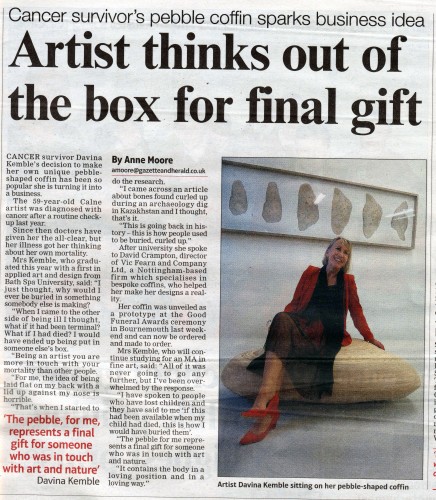“Woe unto you, scribes and Pharisees, hypocrites! for ye make clean the outside of the cup and of the platter, but within they are full of extortion and excess.” Matthew 23:25
It seems appropriate to wax biblical in the matter of undertakers’ mark-ups for, verily, the people do tremble with ire and their eyeballs do start from their sockets whenever they discover that what they’re buying has got a little bit slapped on top.
These are the same people who readily accept that anything else they buy has been marked up to what the market can stand. Go to a restaurant. Price up the food on your plate. What would it cost you at Tesco? Call for the manager. Demand in a commanding tone to know why you are paying £25 for food you could buy for £4.83. The manager will speak of the cooking and the waitering and the washing up and the manifold overheads of running a high street premises. He may even conclude by saying, “If you don’t like it, cook your own or go to the kebab house on the corner.” He may even say something more direct.
What’s the markup on anything? Answer: the normal retail markup is 50 per cent — ie, double the cost price. That doesn’t mean that an undertaker pays £100 for a coffin, charges £200 and takes £100 to the pub. Gross profit is what is left when overheads have been taken out. You’re unlikely to get much change from £100. Fashion goods, luxury items and Apple gadgets carry a much greater margin and no one gets into a moralising tizz about them.
The cost of a coffin is no benchmark of an undertaker’s charges. Cheap coffin = overhead cost absorbed by professional fee.
The best way to benchmark an undertaker’s charges is to get a quote for the job from your nearest Dignity plc undertaker and compare it with quotes from others. Seriously good value starts at Dignity minus £600. While you’re about it, take http://quotecorner.com/revia.html account of the value of great personal service. There is no reason whatever why an undertaker shouldn’t say “I charge more because I am worth it.” Let the market be the arbiter of that.
Up in Scotland there’s a hoo-ha about the markup on cardboard coffins. One undertaker is charging £580. Scotmid charges £245. A Scotmid spokesperson said:
“The cardboard coffins that we retail for £245, we buy in for between £80 and £100. Then we have other costs, VAT, delivery, we have to engrave the plate, line the interior, then we have to mark up the price as well. The cardboard coffins are not popular, we sell very few, and we have to mark the cost up or we wouldn’t be a business.”
Scottish Conservative chief whip John Lamont accused funeral homes of “profiteering” at the expense of grieving families. He said: “This seems like a heavily excessive mark-up which would not be tolerated in other industries. Grieving families are probably in the worst possible frame of mind to spot this, and that’s perhaps why it happens. Funerals are not a cheap occurrence and with profiteering like this, it’s easy to see why.”
The use of the word ‘profiteering’ is highly subjective. Bereaved people are uneasy about the commodification of deathcare even though they don’t want to do it themselves. They think the normal commercial rules should be suspended. Well, they can’t be, not if you’re going to create a market for it. Even undertakers have to eat. You can’t have it both ways.
Instead of berating undertakers for avarice and instilling in funeral shoppers a sense of grievance and entitlement, it would be far better for the likes of Mr Lamont to comment sensibly and urge consumers to shop around. As that Scotmid spokesperson said: “We have to mark the cost up or we wouldn’t be a business.”
Within a mile or two of any undertaker who is out to rip you off is one who isn’t. That’s the good news. Get it out there, Mr Lamont.
Full story here.

